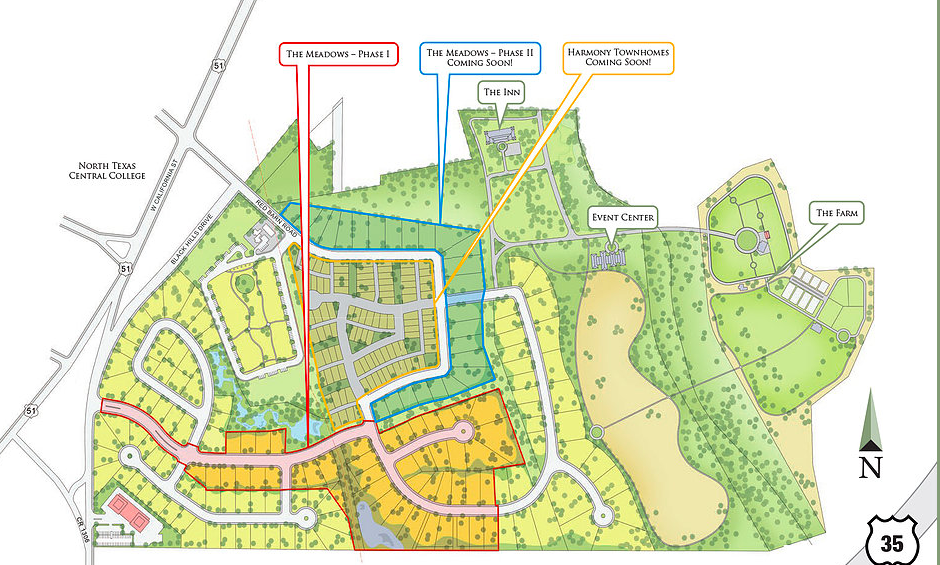Landscape Architect / Entrepreneur
Mentor, Derek McCall
 Derek is the founder of the DRM Design Group, a Tulsa based Landscape Architecture firm doing business throughout the United States and overseas. Before he started his own firm, Derek gained a broad range of experience working for several prestigious Landscape Architecture firms and worked on projects in Asia, the Middle East and in the Caribbean as well as commercial, residential and resort developments throughout the US. Even though he is a young entrepreneur building his own company, Derek still makes time to give back to his community. The most recent example is the design work his firm is doing pro-bono on the Tulsa Police Athletic Outreach Center being designed on the grounds of the Gilcrease police station. The Center will provide children opportunities to become comfortable with their neighborhood police while strengthening their athletic abilities and providing them a safe place to play after school, on weekends, and during summers
Derek is the founder of the DRM Design Group, a Tulsa based Landscape Architecture firm doing business throughout the United States and overseas. Before he started his own firm, Derek gained a broad range of experience working for several prestigious Landscape Architecture firms and worked on projects in Asia, the Middle East and in the Caribbean as well as commercial, residential and resort developments throughout the US. Even though he is a young entrepreneur building his own company, Derek still makes time to give back to his community. The most recent example is the design work his firm is doing pro-bono on the Tulsa Police Athletic Outreach Center being designed on the grounds of the Gilcrease police station. The Center will provide children opportunities to become comfortable with their neighborhood police while strengthening their athletic abilities and providing them a safe place to play after school, on weekends, and during summers
Derek started out wanting to be a Graphic Designer and began taking classes in advertising design at Tulsa Tech while he was still going to high school. But after spending some time looking at OSU’s program in graphic design, he started looking for a degree option that would allow for more time outdoors. So he switched to landscape architecture where he could combine his interest in both design and plants and have a career where he had the opportunity to work outside and inside. Being a landscape architect is also a career where there is a lot of variety in what you do each day. The job incorporates aspects of botany, horticulture, artistic design and architecture. You also have to think long term and produce landscape designs that are financially and environmentally sustainable.
To become a landscape architect, you must first complete a four to five year program depending on the particular college’s curriculum and then work several years with a licensed Landscape Architect before you can take the state exams and become licensed yourself. These educational and work requirements are similar to those of an Architect or a Civil Engineer. Oklahoma has good options for degree paths including the only Bachelors program in the state at OSU and a Masters Program at the University of Oklahoma. Derek received his Bachelors of Science in Landscape Architecture from OSU and was able to get internships and jobs with some of the best landscape architectural firms in the US. The fact that Oklahoma has a public university degree option at OSU makes this degree more affordable than Landscape Architecture degrees from many of the other well-regarded programs around the country
My Career Path
I always had an interest in drawing and thought I wanted to pursue a career in graphic design. I took advantage of the free vocational training program at Tulsa Tech while I was going to Broken Arrow High School and enrolled in classes in advertising graphic design to give me a head start and earn some college credit. But when I went to Oklahoma State for an intro day I realized that graphic design involved a being cooped up inside all day but I was lucky because while I was at OSU I was told about their Landscape Architecture program, a career that is not that well known. I thought Landscape Architecture seemed perfect for me because it combined my interest in design, working with my hands and being outdoors. There are not many other professions that give you that kind of opportunity. So I jumped into it right away and found that I really liked it.
Another reason landscape architecture is a good career for me is because I always had an interest in plants going back to when I was ten. One day when my parents came home they saw that I had dug up a whole section of the lawn and planted a vegetable garden. My father wasn’t upset, let me keep going and helped me turn a whole section of the side of our yard into strawberry beds. His encouragement sparked my interest in horticulture. I also liked drawing and one of my jobs during high school was to do portrait sketches of people for gifts and also drawings for a local Greeting Card Company. So I had these two things, drawing and horticulture, that I liked and never knew how to combine them into a career until I found Landscape Architecture.
The program I took at OSU was for a Bachelor of Science in Landscape Architecture and was a five-year program. You also have to be licensed to be a Landscape Architect just like you do to be an Architect or a Civil engineer. But before you can take the licensing exams, you first have to work under a Licensed Landscape Architect for three years. When you have completed your work requirement, there are four tests you must take that are offered at different times throughout the year. There is a national group called the Council of Landscape Architectural Registration Boards (CLARB) that establishes and promotes professional licensure standards. The group also administers and scores the licensing exams. These test records are maintained by CLARB in a database that makes it easy for a Landscape Architect to work in different states through a reciprocal licensing process. But each state still has its own standards. For example, in California they focus more on earthquake and drought while in Oklahoma we have a specific plant test requirement.
OSU’s program is known for producing very technically oriented landscape architects who have a good general understanding of all aspects of the industry.
Many firms looking for people with good technical skills come to OSU to recruit. But to get a job with one of the top firms, I realized I should take an internship with one of these well-known companies every summer. This is something you should do as well if you decide to become a Landscape Architect. Not only do you get a lot of experience designing and installing projects, these firms work internationally and you get to travel the world.
The first internship I accepted was with Harvard University at their 281 acre Arnold Arboretum in Boston after my freshman year. It was a very structured internship where they had us busy on something every day. A third of the time I was in the greenhouses, a third I was out maintaining the grounds and the plants while the rest of the time was spent in curation where we kept track of the maintenance on the plants and recorded GPS locations.
Because that first internship was with Harvard, the name and reputation of the arboretum helped me get the next internship that was with a firm just outside of Chicago. I was looking at these internships strategically and the while the first one was primarily to get horticultural experience, I also wanted to get some experience with a smaller firm that specialized in both landscape design and construction. There I learned all the aspects of the industry. I primarily worked with Landscape Architects on the design staff designing projects but during the internship I was also allowed to spend time working in different areas including accounting, maintenance, irrigation, construction and shadowing the owner, I remember once driving around with the owner and him saying that he liked to give interns this kind of broad experience. When he hired Landscape Architects he thought it was important for them to have a good grasp on the business from start to finish and know how the design process, installation and maintenance are put together.
For my third internship, I went to a large firm called EDSA that was based in Fort Lauderdale and had offices throughout the world. It was supposed to be a three-month internship but it became an extended internship when they offered me a chance to work in their office in Beijing, China. There I worked on projects in China and also three golf courses in Viet Nam. I worked out of their office in Beijing for four months and then came back and worked another three months in Fort Lauderdale and worked on projects for the Atlantis resorts in Dubai and Paradise Island in the Bahamas. Being able to travel and be involved with projects around the world was one of the benefits of working for a large firm. Here is a link to the EDSA website where you can scroll through pictures of some of their projects: http://www.edsaplan.com
After that long internship at EDSA, I went back to school and finished my course work. At that point I was planning to go back and work for EDSA in Beijing, but I met my wife and decided to go with a company called Design Workshop. DW got its start doing design work for ski resorts like Aspen and grew to where they were designing both cold and warm weather resorts. They first sent me to Asheville, North Carolina where they were had designed the Biltmore Hotel and were designing several mountain developments and resorts. Later I was given the opportunity to start an office for DW in Austin, Texas. The Austin office had a heavy emphasis on community planning and Transit-Oriented Development. But during the downturn in the economy, I decided to go a different direction and start my own company in Austin. I never suggest leaving a company without having other work lined up, but in this case it worked out for me. I started with residential design because I didn’t have a big network of clients where I could do larger projects and because I was not licensed at that point and you can only do residential without a license. Right after I started, my wife, who was a teacher, received a job offer in Tulsa where we both had family. We both decided to move to Tulsa and build the company here even though I continue to do projects in Texas.
One of the reasons I started my own firm was to have more control over my time and the design process. With my own firm now in Oklahoma, I feel I am in a better position to steer a development in a direction where we can save green space and riparian buffers while creating unprogrammed spaces where kids can play and stay connected to their community. I think that this is a better way to do development than just platting land and going in with a bulldozer and making everything flat. I remember that when I was a kid there was an area where we all played that had a small stream and trees and one day the bulldozers came and flattened it for a housing development. That experience stuck with me and I always try to preserve some of the land so children have places to play and dream.
I am also interested in a new kind of development design called Development-Supported Agriculture. One recent project I worked on was in Gainesville, Texas called Black Hill Farms that was designed as a community with a farm at its core. In these kinds of developments, the houses are built around working farms rather than around something like a golf course. Homeowners will have the ability to buy into a CSA, or Community Supported Agriculture program and have produce delivered to their home each week. I am hopeful that this will be a growing trend in residential developments in the years to come.

One of the interesting things about a career in Landscape Architecture is there are a lot of segments to it. Besides residential design, we do designs for parks, master plans for communities, streetscape plans, campus designs, and urban design. While these larger public projects are competitively bid, our residential clients normally come to us through word of mouth. They want someone to do the design and be involved in the entire process from design to installation. We create drawings, costs estimates, bidding/negotiation with contractors, and also observe installation to make sure everything is being installed according to the plans. Here is a link to my company’s website where you can see some of our different projects:
We are also very focused on being connected to the community and always have one or two pro-bono projects on the boards. We strongly believe that a portion of our time each year should be providing our services to non-profits and other organizations that cannot typically afford our fees. We help them with master planning, phasing and fundraising efforts. In addition to the Tulsa Police Outreach Center, we are also currently designing a local women’s shelter.
Becoming a Landscape Architect
- Having some drawing and graphic ability gives you several advantages if you want to pursue a career in Landscape Architecture. One is when you apply for internships. Your graphic designs give you a portfolio where you can show that you understand the design process. The next is the advantage it gives you in meetings. I think the most powerful person in any meeting involving Landscape Architecture is the person who can do quick visual hand sketches and show a group of people like Architects, Traffic =Engineers and Builders what the project they are discussing is going to look like. While the meeting might involve a lot of discussion among those people, your drawings can convey a large idea in a short amount of time and make you the most valuable person in the room.
- If you decide you like Landscape Architecture, sketch all time so you develop this kind of drawing skill. I walk around with my drawing book and a tape measure and draw out how something is built and constantly draw go back and look at my sketch books to help get ideas when I am working on a new project. Also, take lots of pictures of places and architecture so you can use them for creative inspiration and reference on projects.
- There are fewer math classes needed in Landscape Architecture than in building Architecture or a career like Civil Engineering. But geometry is important and you will have to take this and some other advanced math classes in college. Take all the math classes you can in high school so you are prepared when you go to college.
- There are many good but expensive Landscape Architecture programs around the country and most people need to get scholarships to be able to afford the tuition. We are lucky that both OSU has a highly regarded Bachelor program and OU has a highly regarded Master’s Program. Their tuition is significantly less and there are scholarship opportunities.
- You can get either a Bachelors in Landscape Architecture or a Bachelors of Science in Landscape Architecture, depending on the school you attend. Every program has its specialty in Landscape Architecture so do some research before you select a school. OSU had a strong Horticulture Program that allowed me to build upon my interest in plants.
- I also found from my own experience that getting good summer internships with different companies was extremely important. It not only gave me practical experience, but it also allowed me to travel the world, which broadened my outlook on the profession.
- You can find an area of specialization within Landscape Architecture if you work for a large firm if there is something that particularly interests you. Some people just work on project management or marketing and rarely do any drawing while other people who like detail work may like doing things such as construction drawings, details, and cost estimation.
Summary
Being a Landscape Architect and having my own firm is something that I greatly enjoy. I have loved working with plants from the time I was a kid building gardens in my parents yard to now where I get to plant thousands of plants on a single project It is also a career that lets me take a project from conceptualization to installation. I also think it is a career that can have a positive impact on the environment by preserving green spaces and making the built environmental mimic the natural environment as much as possible.
If any of you have an interest in Landscape Architecture, we let HS seniors come in so you can learn more about what a Landscape Architect does. If you have entered a college degree program and completed at least one year, we offer an internship each summer and give our interns the same kind of broad experience I got when working for the design and build firm outside Chicago.
US Bureau of Labor Statistics for Landscape Architects
Pay
The median annual wage for Landscape Architects was $63,810 in May 2015. The median wage is the wage at which half the workers in an occupation earned more than that amount and half earned less. The lowest 10 percent earned less than $40,230, and the highest 10 percent earned more than $104,710.
Job Outlook
Employment of Landscape Architects is projected to grow 5 percent from 2014 to 2024, about as fast as the average for all occupations.
Planning and developing new and existing commercial, industrial, and residential construction projects’ landscapes will drive employment growth. The public’s desire for beautiful and functional spaces will continue to require good site planning and landscape design.
In addition, environmental concerns and increased demand for sustainably designed buildings and open spaces will spur demand for the services of Landscape Architects. For example, Landscape Architects are involved in the design of green roofs, which are covered with vegetation and help reduce air and water pollution, as well as reduce the costs of heating and cooling a building.
Landscape architects will also be needed to design plans to manage storm-water runoff in order to conserve water resources and avoid polluting waterways.








